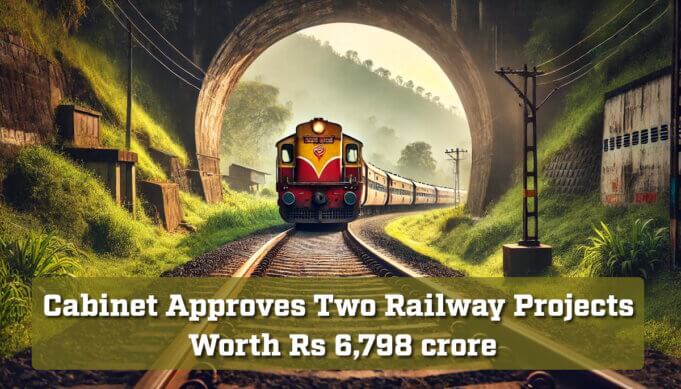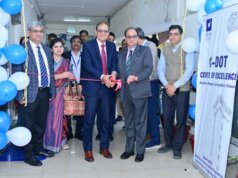On 24 October 2024, the Cabinet Committee on Economic Affairs (CCEA), led by Prime Minister Narendra Modi, sanctioned two railway initiatives by the Ministry of Railways, with a combined estimated cost of Rs 6,798 crore.
The approved projects include: (a) the doubling of the Narkatiaganj-Raxaul-Sitamarhi-Darbhanga and Sitamarhi-Muzaffarpur sections, spanning 256 km, and (b) the construction of a new rail line between Errupalem and Namburu via Amaravati, covering 57 km, expected to be completed within five years. These projects are projected to generate direct employment equivalent to 106 lakh person-days.
The doubling of the Narkatiaganj-Raxaul-Sitamarhi-Darbhanga & Sitamarhi-Muzaffarpur sections aims to enhance connectivity to Nepal, the North-east, and border areas of India. This will facilitate both passenger and freight movement, contributing to the socio-economic progress of the region.
The new rail line from Errupalem to Namburu will pass through the NTR Vijayawada and Guntur districts in Andhra Pradesh, as well as the Khammam district in Telangana.
These two projects span eight districts across Andhra Pradesh, Telangana, and Bihar, extending the existing railway network by 313 km. The new line project will provide connectivity to approximately 168 villages and around 12 lakh people, including nine new stations. The multi-tracking initiative will benefit two aspirational districts (Sitamarhi and Muzaffarpur), reaching 388 villages and serving about nine lakh people.
These routes are crucial for transporting goods like agricultural produce, fertilizers, coal, iron ore, steel, and cement. The capacity enhancements are anticipated to add 31 million tonnes per annum (MTPA) of freight traffic. Additionally, rail transport, being eco-friendly and energy efficient, will support India’s climate goals, lower logistics costs, reduce CO2 emissions by 168 crore kg, and have an environmental impact equivalent to planting seven crore trees.
The new rail line will connect directly to Amaravati, the proposed capital of Andhra Pradesh, enhancing mobility for local industries and the population, while improving operational efficiency and service reliability for Indian Railways. The multi-tracking project will alleviate congestion and improve operational flow, adding much-needed infrastructure to some of the busiest railway segments.
Both projects are part of the PM-Gati Shakti National Master Plan, which focuses on integrated planning to ensure seamless multi-modal connectivity for the movement of people, goods, and services.
Cover photo: Open AI











